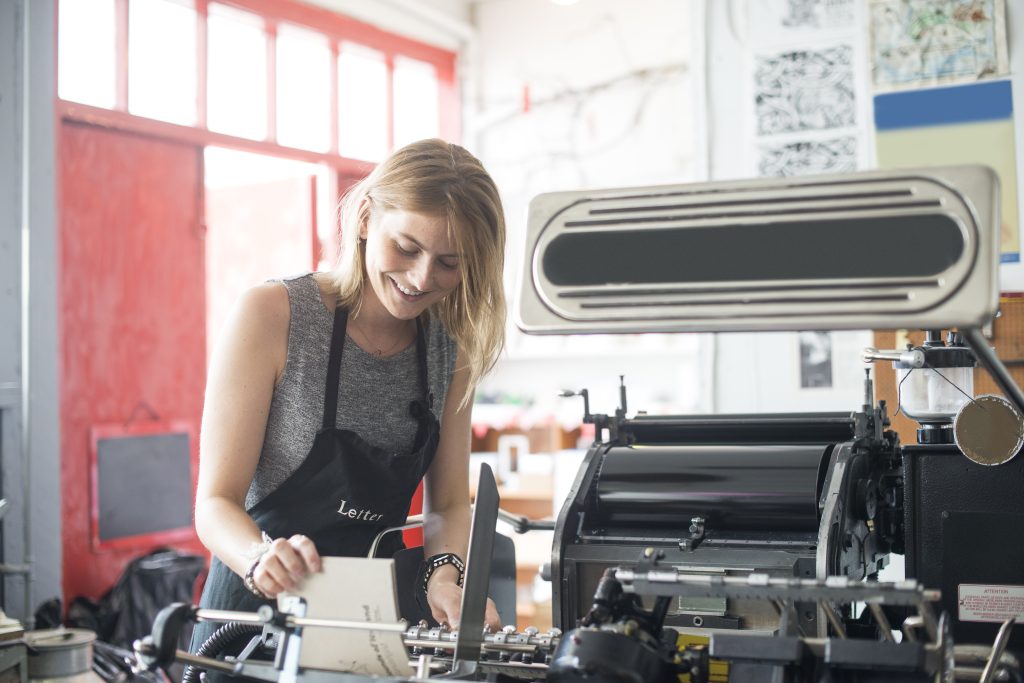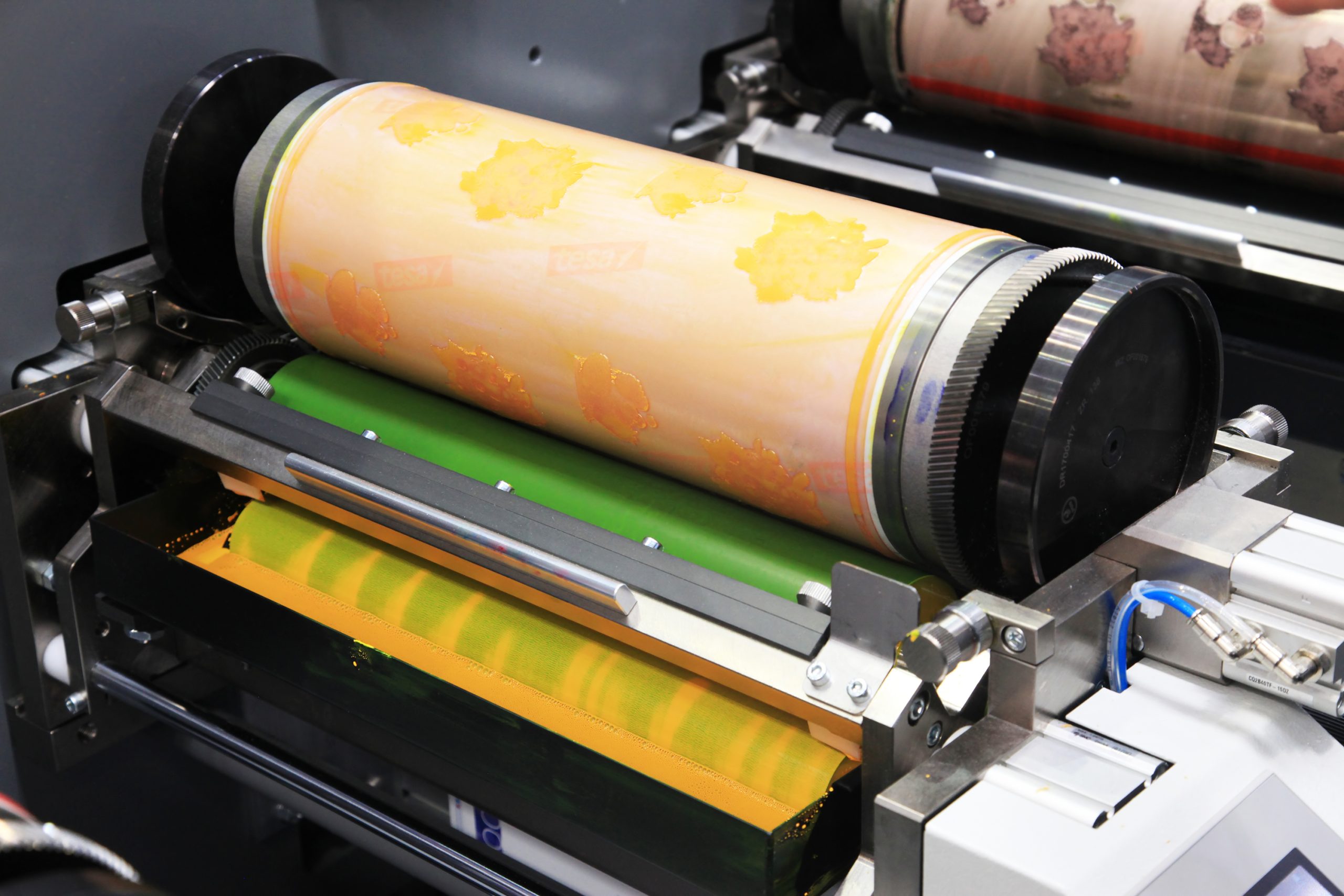Printing may seem like a mundane task in our digital age, but there is an undeniable beauty in the printed form. The textures, colors, and craftsmanship that go into creating a printed piece can evoke a sense of wonder and appreciation. Whether it’s a beautifully designed book, a carefully crafted poster, or a meticulously printed photograph, the aesthetics of printing can captivate and inspire.
In this article, we will explore the artistry behind printing and delve into the various elements that contribute to its beauty. From the choice of paper and ink to the printing techniques and finishes, we will examine how these factors can elevate a simple piece of paper into a work of art. So, if you have ever found yourself drawn to the allure of a well-designed printed piece, join us as we uncover the secrets of its aesthetic appeal.
20th Century Art Form: Print Beauty Magazines
In the fast-paced and consumer-driven society of the 20th century, print beauty magazines emerged as a significant art form focused on capturing and promoting beauty. These magazines provided a platform for showcasing beauty brands and trends, shaping society’s perception of what is beautiful.
Rooted in the principles of the Aesthetic Movement, these magazines celebrated beauty for its own sake. The Aesthetic Movement, which gained momentum in the late 19th century, emphasized the importance of art that delighted the senses and brought joy to everyday life.
Print beauty magazines flourished during this time, featuring elegant and visually stunning layouts that showcased the latest makeup, skincare, and fashion trends. With their exquisite imagery and compelling content, these magazines captured the imagination of readers and played a pivotal role in shaping beauty ideals.
Through collaborations with beauty brands, print beauty magazines not only showcased their products but also generated desire and inspired consumers to keep up with the latest trends. They provided a visual journey through the world of beauty, depicting the transformative power of cosmetics and celebrating individual expressions of style.
In the realm of print beauty magazines, aesthetics and commerce seamlessly blended, creating a unique art form that celebrated the beauty both within the pages and in the lives of their readers. By capturing the essence of the Aesthetic Movement, these magazines transformed the perception of beauty and left a lasting impact on society’s collective imagination.
Emotional Responses To Printed Beauty
Printed beauty has the power to evoke strong emotional responses in viewers. Whether it’s a painting, a photograph, or an advertisement, the visual elements and aesthetic choices can elicit a wide range of feelings, from joy and admiration to contemplation and even sadness. The use of color, composition, texture, and other design elements all contribute to the emotional impact of printed beauty. By harnessing the principles of aesthetics, artists and designers have the ability to create images that resonate on a deeply emotional level.
Whether it’s the ethereal and dreamlike qualities of a Mary Cassatt print or the bold and vibrant colors of a Paul Gauguin painting, these works have the ability to transport viewers to a different world and evoke empathetic responses. In the 20th century, Japanese artists and their aesthetics, such as the Torii School, the Katsukawa School, and the Utagawa School, also contributed to the exploration of emotional responses through printmaking. Today, contemporary artists continue to push the boundaries of print beauty, seeking to provoke, inspire, and connect with audiences on a profound emotional level.
Aesthetic Preference In Different Cultures And Eras
Aesthetic preference, the subjective judgment of beauty, has been shaped by different cultures and eras. Throughout history, diverse notions of beauty and artistic values have emerged, reflecting the unique perspectives and ideals of each time and place.
In the 19th century, European artists embraced realism and naturalism, while Japanese artists focused on simplicity and understatement. The Torii, Katsukawa, and Utagawa schools in Japan, for example, emphasized bold, curvilinear forms, distinct from their European counterparts.
Cultural norms and societal influences have played a significant role in shaping aesthetic preference. In Japan, aesthetics are deeply ingrained in everyday life, with the concept of wabi-sabi celebrating imperfection and transience. Meanwhile, Western beauty standards tend to prioritize symmetry and perfection.
Historical context also impacts aesthetic preferences. The art of the 16th century was characterized by religious themes and personal expression. In the 20th century, the advent of mass media and globalization brought new influences and gave rise to contemporary artistic styles.
Overall, aesthetic preferences are shaped by a combination of cultural, societal, and historical factors. Each culture and era brings its own unique perspective and ideals of beauty, enriching the collective understanding and appreciation of the arts.
Representations of Beauty by Contemporary Artists
Contemporary artists challenge the established notions of beauty by embracing subjective concepts that differ from the objective criteria laid out by ancient philosophers. While ancient philosophers like Plato and Aristotle sought to establish universal standards for beauty, contemporary artists emphasize individual interpretations and personal expressions of beauty.
Enlightenment philosophers further advanced the idea of subjective beauty. Immanuel Kant argued that beauty is a subjective judgment based on taste, with each individual having their own unique perception of what is beautiful. This rejection of objective criteria allowed contemporary artists to explore a wider range of artistic expressions and challenge traditional notions of beauty.
In the realm of contemporary art, beauty is not confined to external appearances or traditional aesthetics. Artists often delve into the realm of emotions, personal narratives, and societal concerns. They experiment with unconventional materials, unconventional subjects, and unconventional techniques to challenge the viewer’s perceptions and provoke thought.
The representation of beauty by contemporary artists is a highly individualized and personal endeavor. Each artist brings their own background, experiences, and influences to their artistic practice, resulting in a multitude of interpretations and expressions of beauty. These diverse representations of beauty reflect the richness and complexity of human expression and highlight the subjective nature of judgments of beauty.
Understanding Different Forms of Print Beauty
The beauty of printmaking lies in its diverse range of techniques, each with its own unique aesthetic appeal. Traditional methods such as woodcut, etching, engraving, and lithography have long been recognized for their intricate details and expressive qualities. Woodcuts, dating back to the 16th century, involve carving an image into a block of wood and printing it onto paper or fabric. The bold lines and textures created by the characteristic grain of the wood contribute to its rustic and organic beauty.
Etching and engraving, often associated with the 19th century, involve incising or carving an image onto a metal plate. The artist then applies ink to the plate, which is transferred onto paper through a press. These techniques allow for precise lines and delicate details, resulting in a refined and intricate beauty.
Lithography, developed in the late 18th century, offers a different approach. It involves drawing an image onto a flat surface, often a stone or metal plate, using a greasy substance. The surface is then dampened and inked, with the image being transferred onto paper. The smooth, seamless lines and rich tonal variations achieved through lithography give it a distinctively elegant and sophisticated beauty.
In contemporary printmaking, artists explore a wide array of techniques and materials to push the boundaries of print beauty. Digital printing allows for the reproduction of intricate details and vibrant colors, while screen printing offers a bold, graphic aesthetic. Artists also experiment with alternative materials such as glass, metal, and fabric, adding texture and dimension to their prints.
Understanding the different forms of print beauty allows us to appreciate the rich history and techniques of printmaking, as well as the innovative and expressive possibilities it offers to contemporary artists.
The Impact Of Printing On Beauty
The art of printing has had a profound impact on the concept of beauty throughout history. It has not only allowed for the reproduction and dissemination of beauty, but has also shaped our understanding and appreciation of aesthetic preferences. Through the development of various printing techniques, artists have been able to capture and express beauty in unique and captivating ways.
From the intricate details of traditional methods like woodcut and etching, to the refined elegance of lithography, the possibilities of printmaking have expanded over time. In the contemporary era, digital printing and experimental materials have further pushed the boundaries of print beauty, allowing artists to explore new realms of creativity.
By understanding the impact of printing on beauty, we gain a deeper appreciation for the artistic achievements of the past and the innovative possibilities of the present.
How Print Media Influences Society’s Perception Of Beauty
Print media plays a significant role in influencing society’s perception of beauty by shaping both subjective and objective concepts of beauty. Throughout history, there has been a philosophical debate about the nature of beauty. Enlightenment philosophers argued for the subjective nature of beauty, suggesting that beauty is in the eye of the beholder. On the other hand, ancient philosophers like Plato and Aristotle believed that beauty had objective criteria.
Print media, such as beauty magazines and advertisements, often showcase societal beauty standards, which can impact personal taste and judgments of beauty. By presenting idealized images, print media creates a standard to aspire to, influencing how individuals perceive beauty. This can lead to the internalization of these beauty standards, causing individuals to strive for a certain appearance that may not align with their natural features.
Moreover, print media acts as a platform for beauty brands and professionals, contributing to the construction and dissemination of societal beauty ideals. These media outlets often collaborate with beauty directors and editors to curate content and disseminate specific beauty standards.
Japanese Aesthetics And Their Influence On Print Beauty
Japanese aesthetics have had a profound influence on print beauty, particularly through the art form of ukiyo-e. Ukiyo-e, meaning “pictures of the floating world,” emerged during the 17th century and became popular in the 19th century. It showcased various aspects of urban life, including beautiful women, landscapes, and scenes from theater and literature.
One key concept in Japanese aesthetics is the notion of wabi-sabi, which emphasizes the beauty of imperfection and impermanence. This is reflected in ukiyo-e prints, where artists embraced the natural flaws in the woodblock printing process and sought to capture fleeting moments of beauty. The aesthetic preference for asymmetry and irregularity can be seen in the curvilinear forms and flowing lines often found in these prints.
The artistic styles within ukiyo-e also embody Japanese aesthetics. For example, bijin-ga, or beauty prints, depict elegant and fashionable women. These prints exemplify the ideal of feminine beauty in Japanese culture, with their graceful postures, elaborate hairstyles, and intricate kimono patterns.
Another genre, kacho-ga, showcases bird and flower prints. These artworks capture nature’s ephemeral beauty and express a deep appreciation for the harmony between humans and their natural surroundings. The use of vibrant colors and delicate brushwork in kacho-ga prints further enhances their aesthetic appeal.

Conclusion
In conclusion, the aesthetics of printing and the beauty found in the printed form play a significant role in our well-being. The experience of aesthetic pleasure when engaging with printed artworks can have a positive impact on our emotional state and overall sense of well-being.
By incorporating psychophysiological measures in assessing the impact of aesthetic emotion, we can gain a deeper understanding of the physiological and psychological responses triggered by printed artworks. These measures, such as monitoring heart rate, skin conductance, and brain activity, can provide valuable insights into the intensity and nature of aesthetic experiences.
When considering art-based programs, both emphasizing empathetic responses and the understanding of artwork meaning can be effective approaches. Empathetic responses allow individuals to connect with the emotions and experiences depicted in the prints, fostering a sense of empathy and understanding. On the other hand, understanding the meaning behind the artwork can deepen the appreciation and engagement with the printed form.
Incorporating both empathetic responses and the understanding of artwork meaning in art-based programs can contribute to a more holistic and impactful experience, enhancing the potential benefits on well-being. The aesthetics of printing offer a unique opportunity to explore, appreciate, and derive pleasure from the beauty of the printed form, ultimately enriching our lives.




